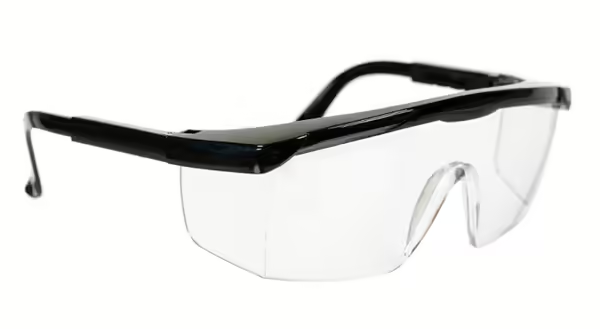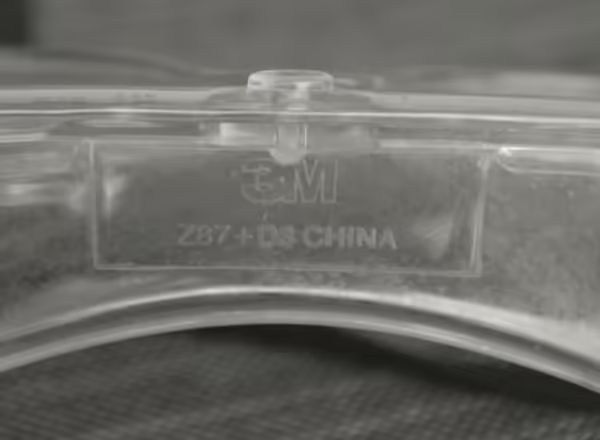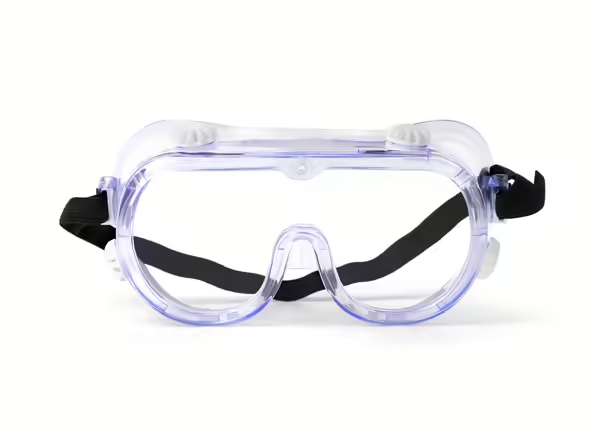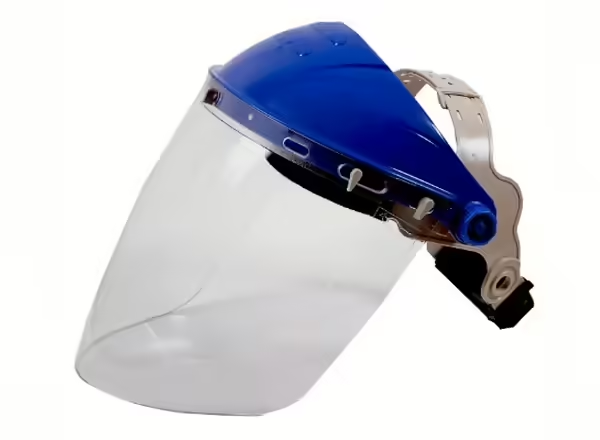
How well are you protecting your eyes while applying pesticides? Unprotected or inadequately protected eyes are at high risk of pesticide exposure, which can result in mild to severe irritation, eye injury, vision loss, or even permanent disability. Eye exposure also provides a route for the product to enter the body and contribute to chronic long-term effects.
Shown at right, safety glasses with brow and side shields provide additional protection. Credit: Sviatoslav Kovtun, Adobe Stock
Exposure can occur at any step of the application process. Wearing the correct protective eyewear is your best defense. What protective eyewear should you choose? Start by reading the pesticide’s label. Some labels may require specific protective eyewear, which may include safety glasses, goggles, or a face shield. Many labels may broadly require “protective eyewear”, which allows you to choose from the previously mentioned options. Use common sense and select eyewear that protects you for the task at hand. While not required by all labels, eye protection is still advisable when handling and applying any type of pesticide.
When selecting protective eyewear, be sure to use eye protection that meets the requirements of the American National Standard for Occupational and Educational Personal Eye and Face Protection Devices (ANSI Z87.1). Protective eyewear stamped with “Z87” meets the ANSI standards for protection from impact hazards. Eyewear stamped with “Z87+” has passed higher ANSI testing standards and offers protection from high-velocity impacts. Pesticide users frequently work in environments that may require protection from dusts, splashes, and droplets. Eyewear that meets the ANSI Z87.1 requirements for protection against liquid splashes and droplets will be marked with D3, eyewear protecting against dust particles will be marked with D4, and eyewear protecting against fine dust particles will be marked with D5.

Safety Glasses
Safety glasses are the most basic form of eye protection. They are inexpensive and available in a variety of styles. Shielded safety glasses are preferred because they have brow and side shields to provide additional protection. Most safety glasses lack brow and side shields, resulting in little protection against splashing liquids and dusts. As such, they are best used under conditions with minimal exposure risk.
Also, note that sunglasses and reading glasses are not a substitute for safety glasses and will not provide protection during work activities. If you wear eye glasses, select safety glasses with prescription lenses or purchase safety glasses that fit over your prescription glasses.

Goggles
Wear tight-fitting, non-fogging, chemical splash goggles whenever you are in high-exposure situations. Goggles wrap around the eyes and seal above and below to prevent chemicals from getting to the eyes. Safety goggles should either be non-vented or have indirect vents. Avoid goggles with perforations or air holes that may allow liquids to leak in. Safety Googles that meet the ANSI Standards for splash and droplet protection will be stamped with “D3”.

Face Shields
Face shields protect the eyes and face from splashes and may be worn over goggles for additional protection. They are particularly helpful during high-risk activities like pouring or loading concentrated pesticides into a tank.
Even protected eyes may be exposed to pesticides. In the event of an exposure, you should be prepared to act quickly. Always have an eyewash station or a source of clean water nearby. Inexpensive eyewash bottles can be used until you are able to reach a faucet or other sufficient water source.
Rinse the pesticides from the eyes as soon as possible. In general, applicators should avoid wearing contact lenses while working with pesticides. If contact lenses are present, the product label may recommend rinsing for a few minutes before removing the lenses, and then continuing the rinse process.
To rinse, hold your eyelids open and flush the eye with drips of clean, running water. Rinse for 15 minutes or longer. Do not use chemicals or drugs in the wash water as they may increase the severity of the injury. After rinsing, seek immediate medical attention.
ABOUT THE AUTHOR: Travis Cleveland provides subject matter expertise and training in pesticide safety with an emphasis on plant pathology. He provides diagnostic support the U of I Plant Clinic and he coordinates the Home, Yard and Garden Pest Newsletter.